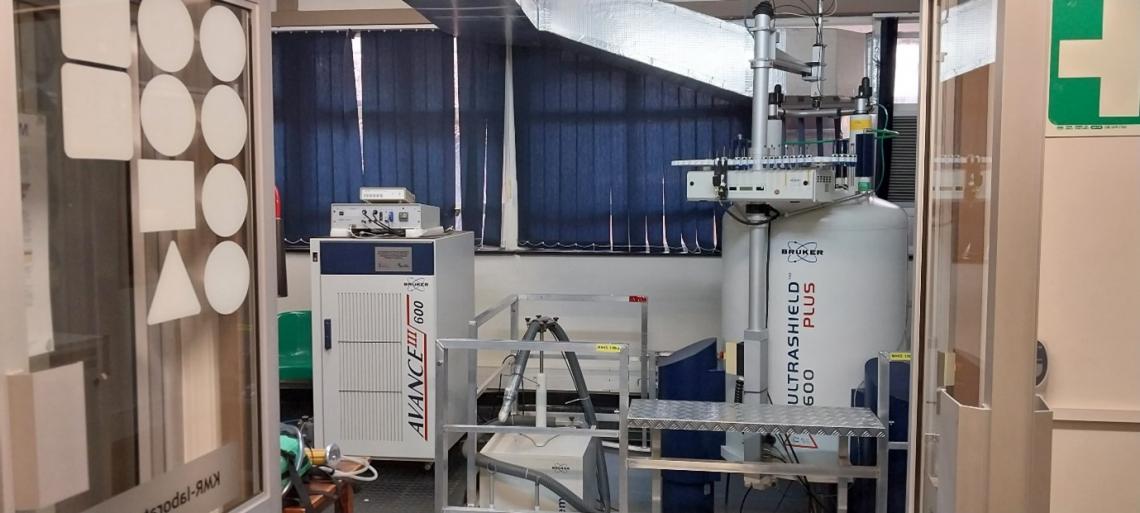
The 600 MHz NMR spectrometer is a high-field instrument with a magnet strength of approximately 14 Tesla. The NMR spectrometer is a workhorse and more than 1 000 samples are analysed per annum. Samples that are dissolved in liquids can be analysed. Routine analysis can be performed, which typically involves 1H, 11B, 13C, 19F, and 31P experiments. The spectrometer can easily perform 2D analyses such as 1H-1H COSY/TOCSY,
1H-13C HSQC,1H-13C HMBC, and 1H-1H NOESY/ROESY. In certain cases, 3D analyses are also possible. The instrument is also used for true research purposes and some of the measurements that are employed include diffusometry and relaxometry experiments. The spectrometer is a robust piece of equipment although liquid nitrogen and liquid helium are very expensive. These cryogens ensure that the magnet is sufficiently cooled to around
3 Kelvin for optimal maintenance and performance.
Young tubes, 3 mm tubes, match sticks and quartz tubes can be made available at special request and can improve the spectral quality significantly. Tubes are also available that can withstand pressures of up to 15 bar.
Two probes are currently employed. A direct observation broadband probe (BBO) is available. An indirect observation broadband probe is also available to study more exotic nuclei. The NMR spectrometer is versatile and can be seen as a laboratory on its own.
